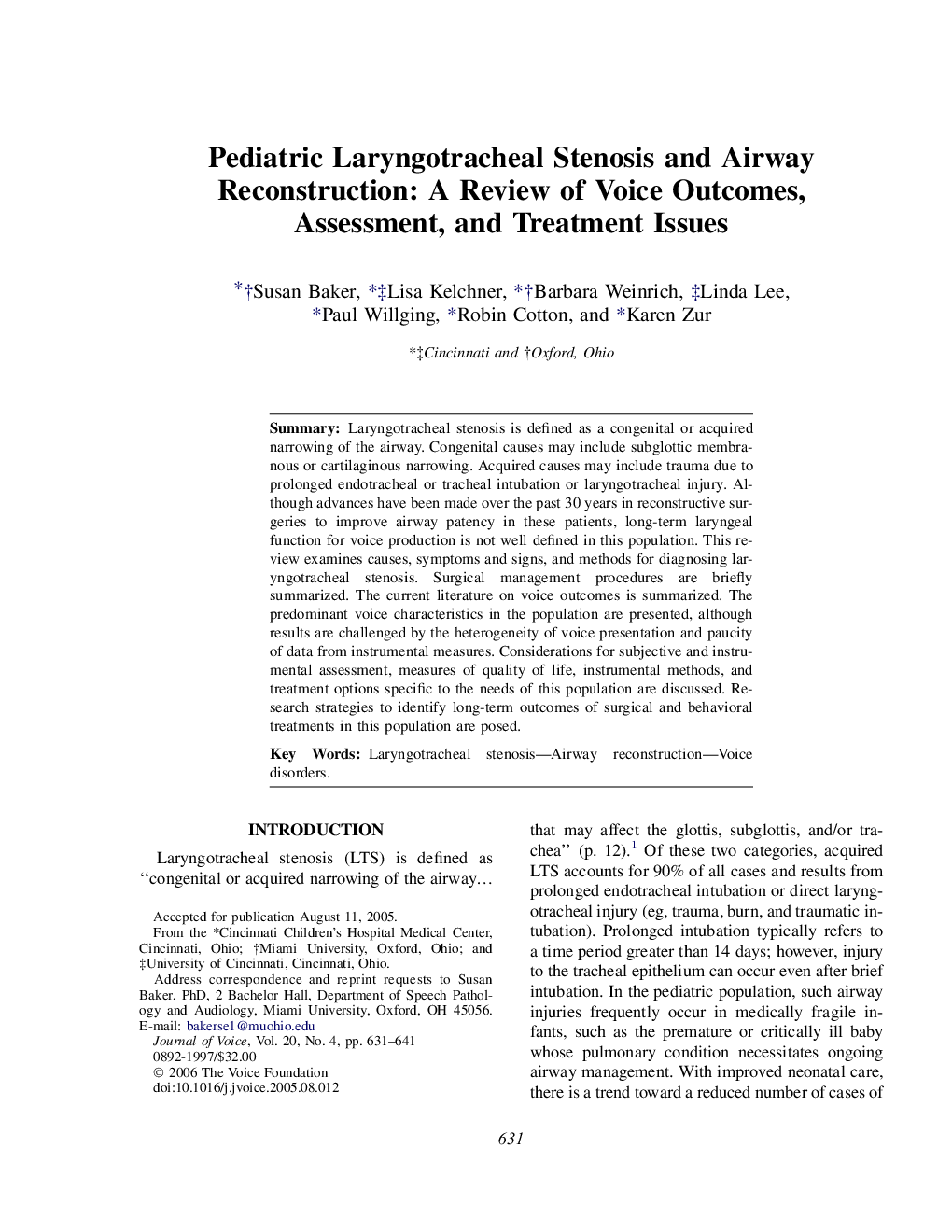| کد مقاله | کد نشریه | سال انتشار | مقاله انگلیسی | نسخه تمام متن |
|---|---|---|---|---|
| 1102945 | 1488126 | 2006 | 11 صفحه PDF | دانلود رایگان |

SummaryLaryngotracheal stenosis is defined as a congenital or acquired narrowing of the airway. Congenital causes may include subglottic membranous or cartilaginous narrowing. Acquired causes may include trauma due to prolonged endotracheal or tracheal intubation or laryngotracheal injury. Although advances have been made over the past 30 years in reconstructive surgeries to improve airway patency in these patients, long-term laryngeal function for voice production is not well defined in this population. This review examines causes, symptoms and signs, and methods for diagnosing laryngotracheal stenosis. Surgical management procedures are briefly summarized. The current literature on voice outcomes is summarized. The predominant voice characteristics in the population are presented, although results are challenged by the heterogeneity of voice presentation and paucity of data from instrumental measures. Considerations for subjective and instrumental assessment, measures of quality of life, instrumental methods, and treatment options specific to the needs of this population are discussed. Research strategies to identify long-term outcomes of surgical and behavioral treatments in this population are posed.
Journal: Journal of Voice - Volume 20, Issue 4, December 2006, Pages 631–641